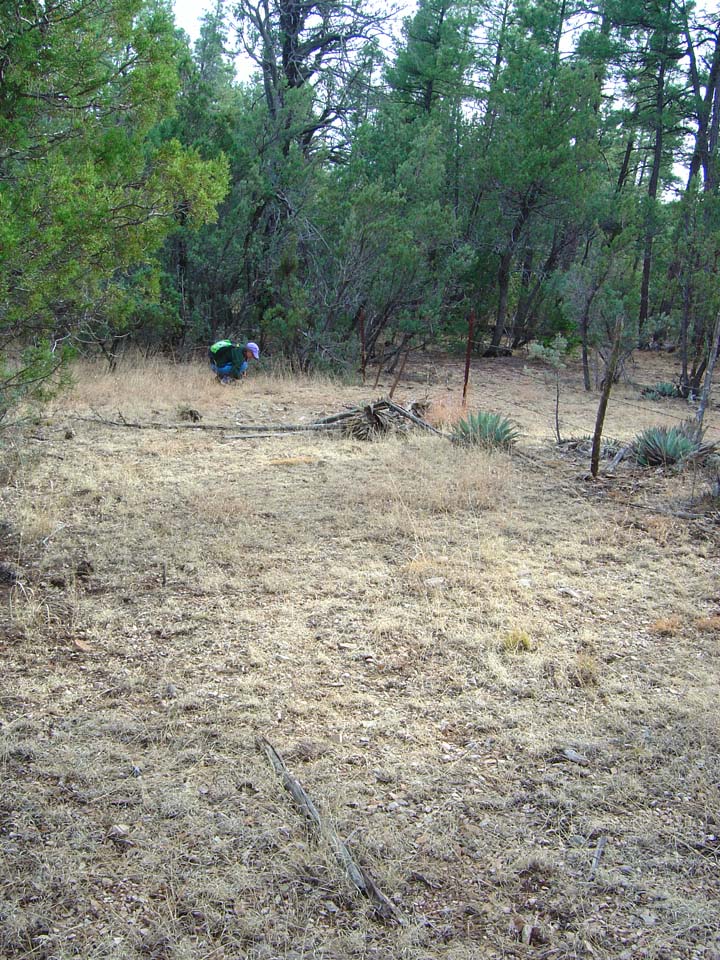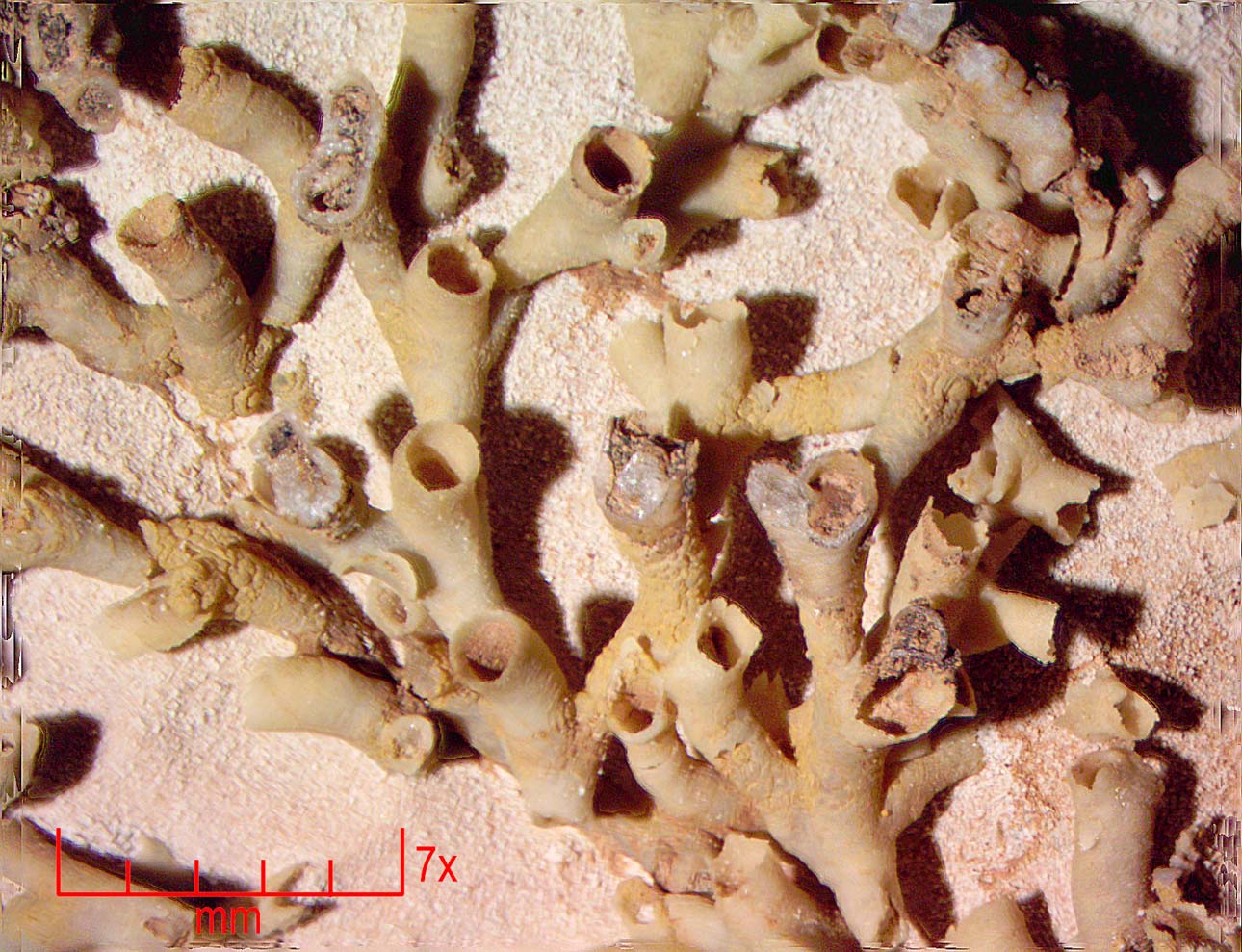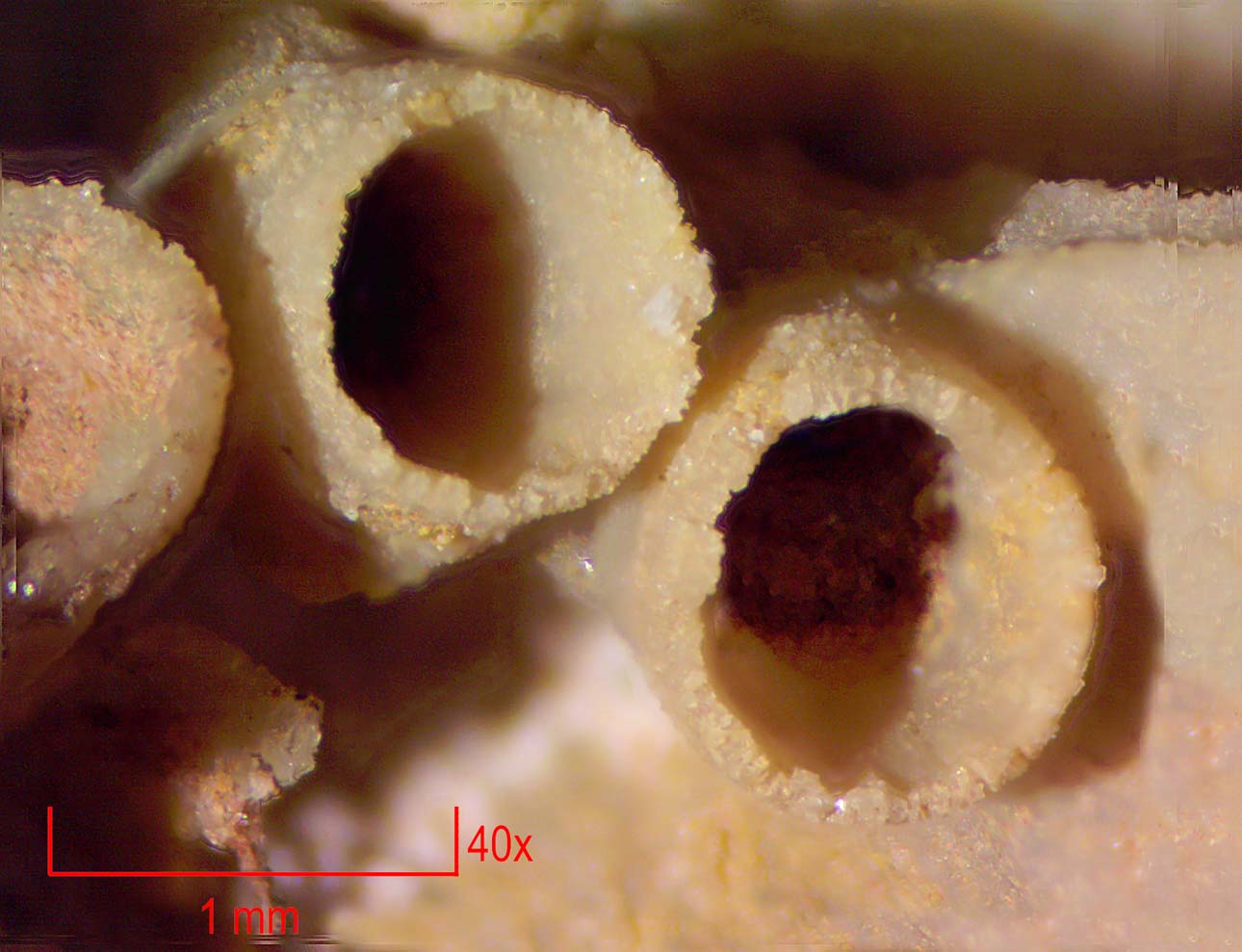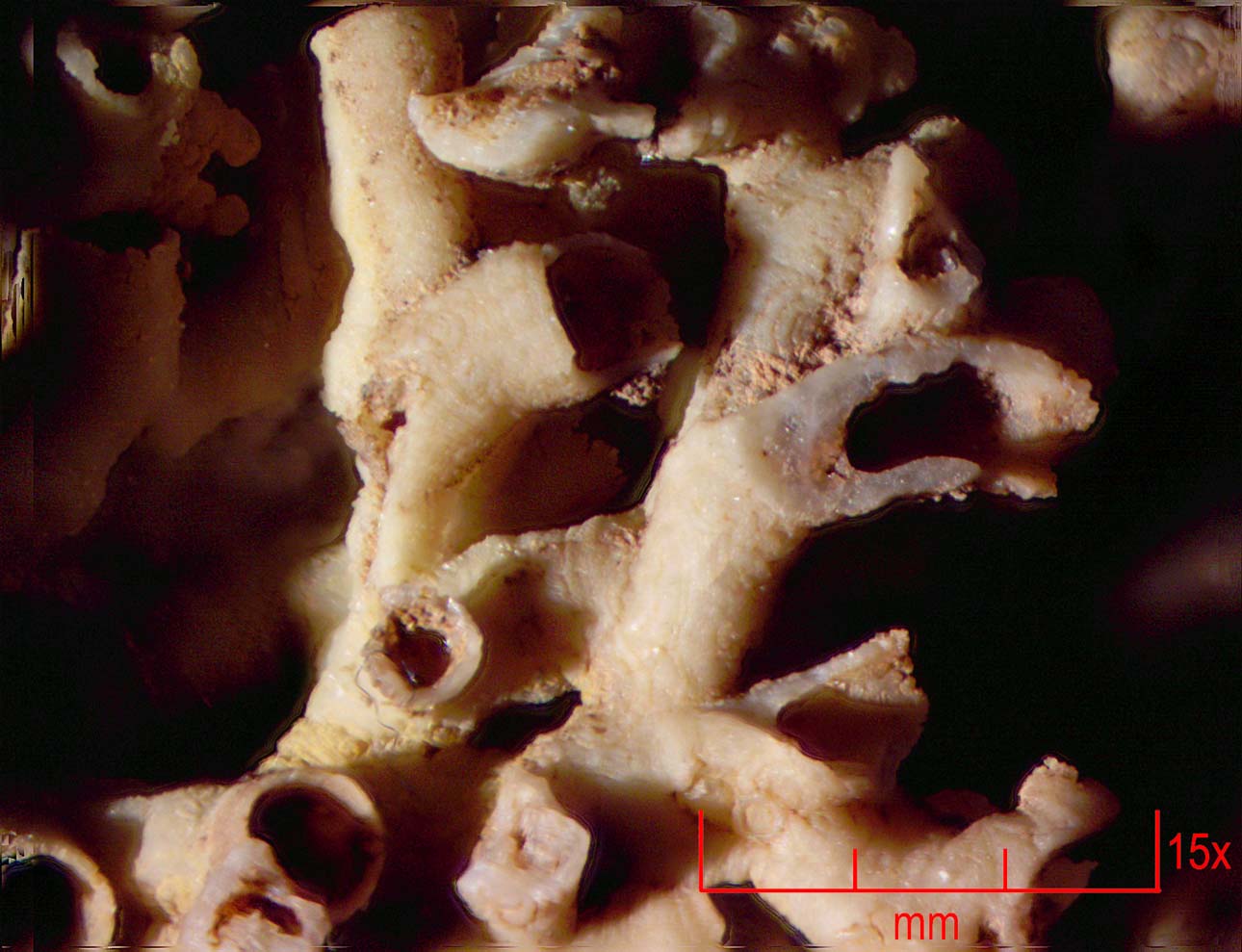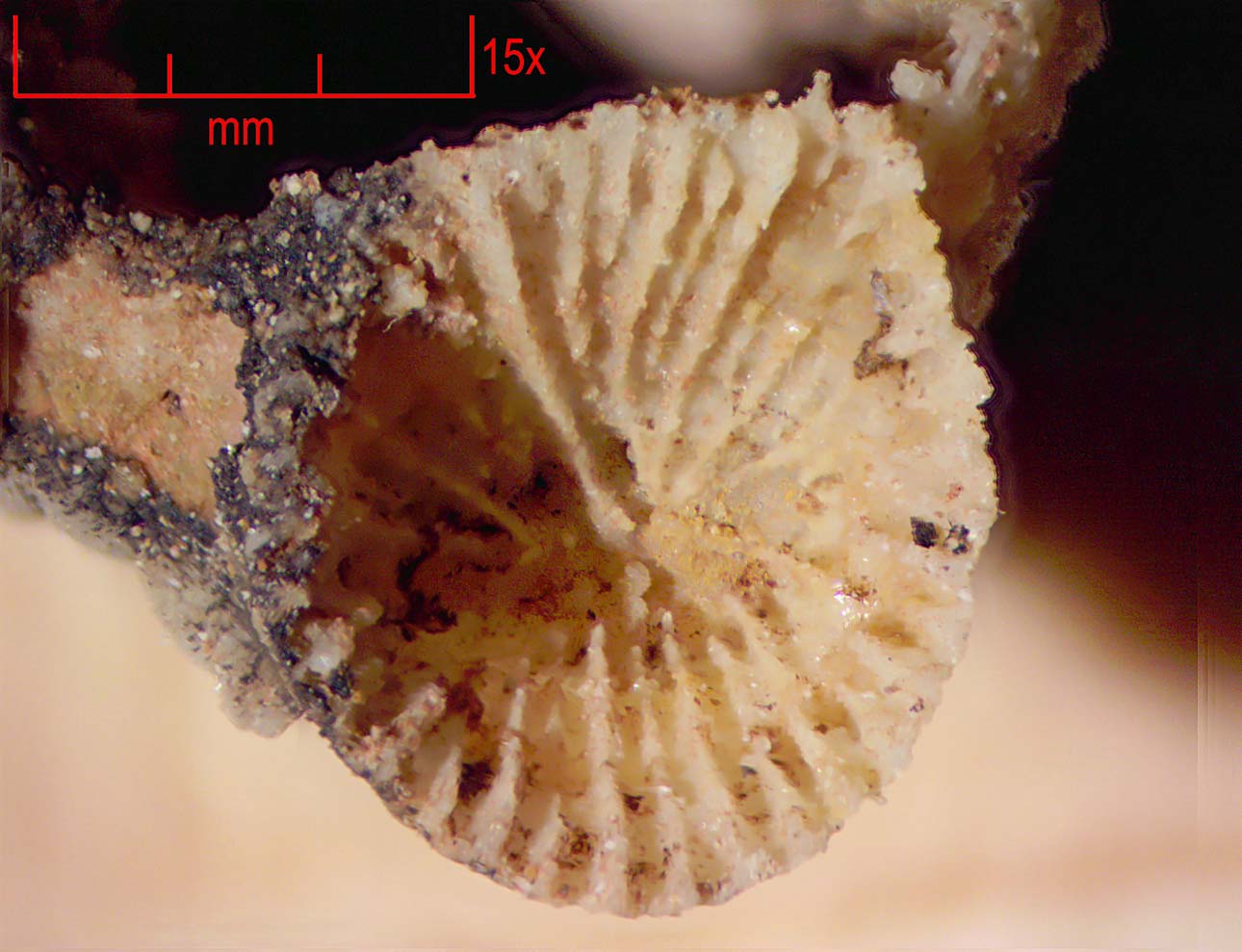|
|
|
|
| At the convergence of the Tonto and Horton creeks east of Payson, we find three primary formations, all with some type of fossils. The lowest in the stratagraphic column is the Devonian Martin formation, a pink hued platy limestone with trace fossils and a low diversity of silicified tabulate and rugose corals. Lying directly over is the gray and melted looking Redwall Limestone. Dominated by crinoidal material in the limestones, it contains beds of brown cherts with molds of a huge variety of invertebrates. Also localized beds of oolitic limestone found in the same area contain huge Straparollus gastropods. And finally, overlying the Redwall is the Pennsylvanian Naco formation. Again many crinoids in the limestones which are more angular and reddish stained. Beds of brown/red cherts can be either totally non fossiliferous or contain both molds and casts of corals, sponges and crinoids. This locality within a half mile area contains all three formations and is a great place to spend a few hours hiking in a stunning backdrop of pine trees and flowing rivers! |
|
The Martin Limestone Locality: Here I am seen at the Disphyllum coral locality in the pink platy limestones. 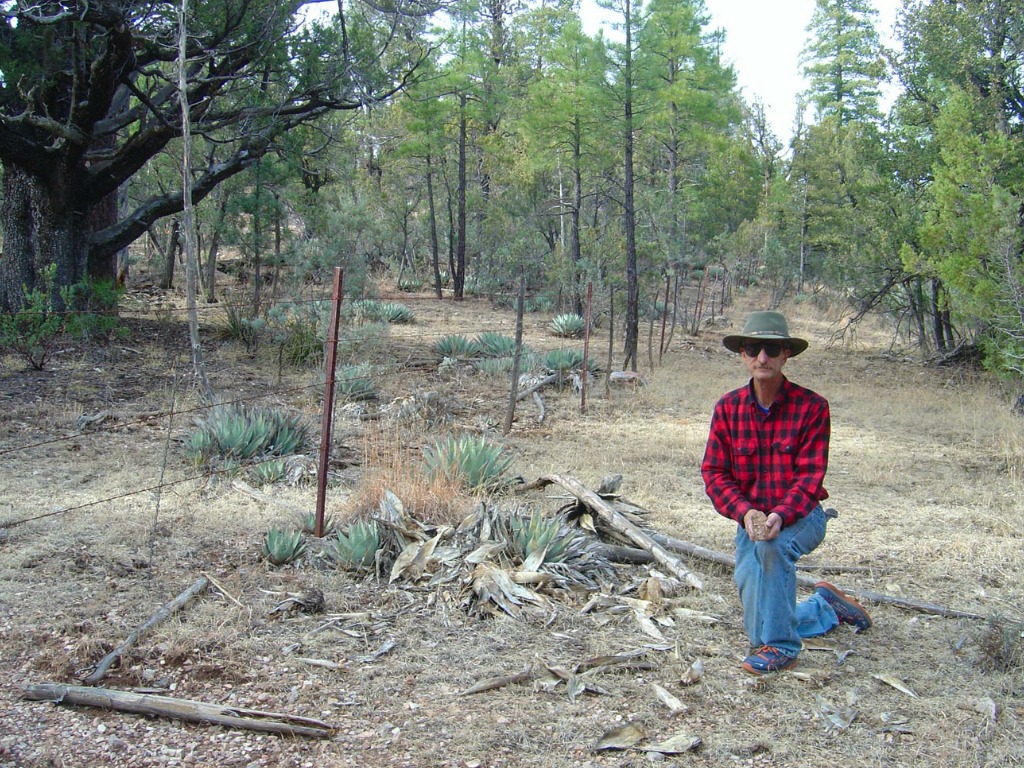
Dawn finds hordes of Disphyllum tubes lying right on the ground here!
My backpack is getting very heavy now. Which ones to take back? 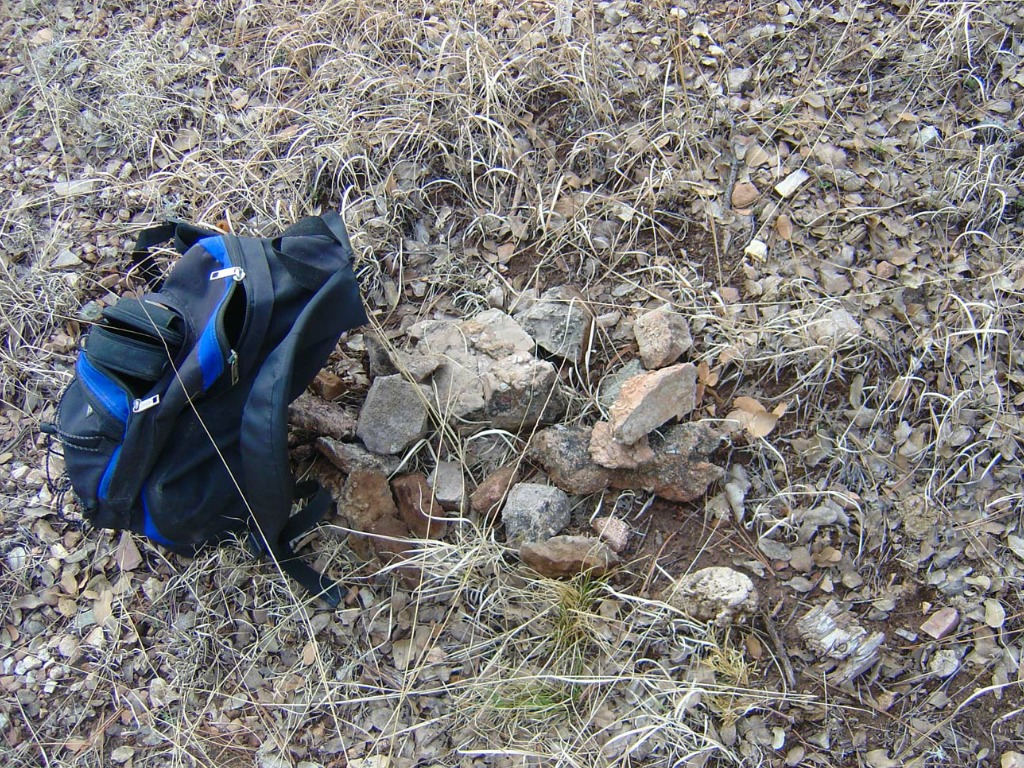
Back home on the bench, the selected specimens ready for the acid bath. 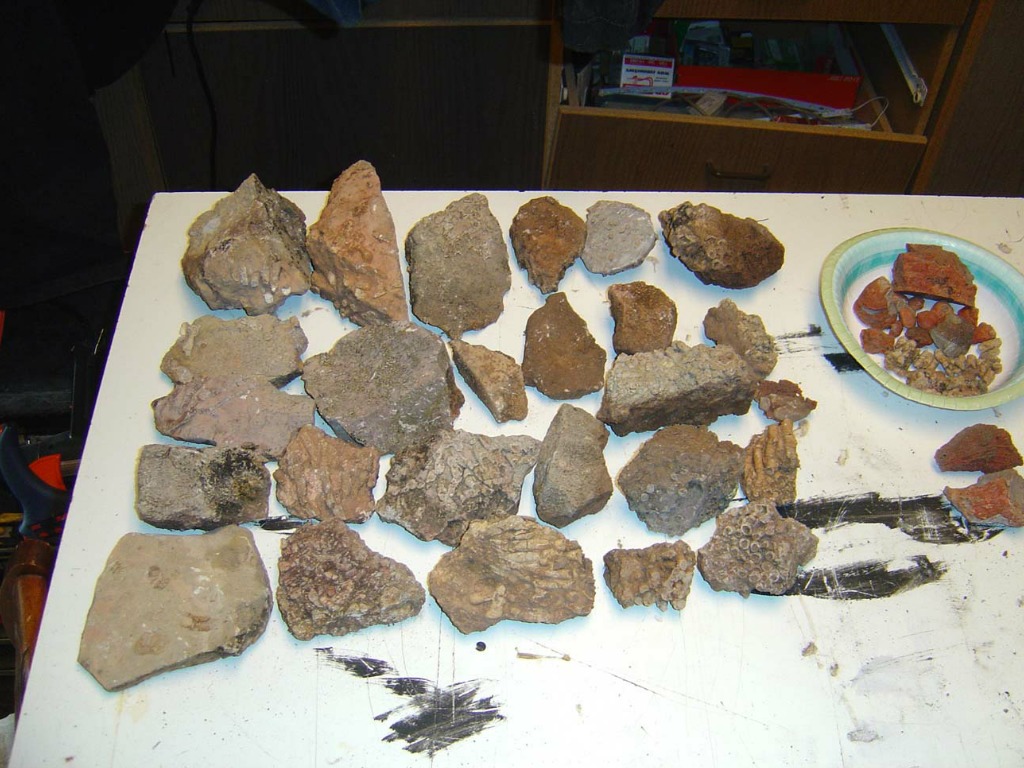
Fossils from the Disphyllum site: Disphyllum on the left and Aulopora on the right. The Aulopora was very fragmented, and if we left the limestone in the acid too long, all we would get is a pile of pieces. So as in this specimen, we only dissolved the rocks about half way down to provide a stable base to hold the corals. Even so, you have to be pretty careful on handling them! 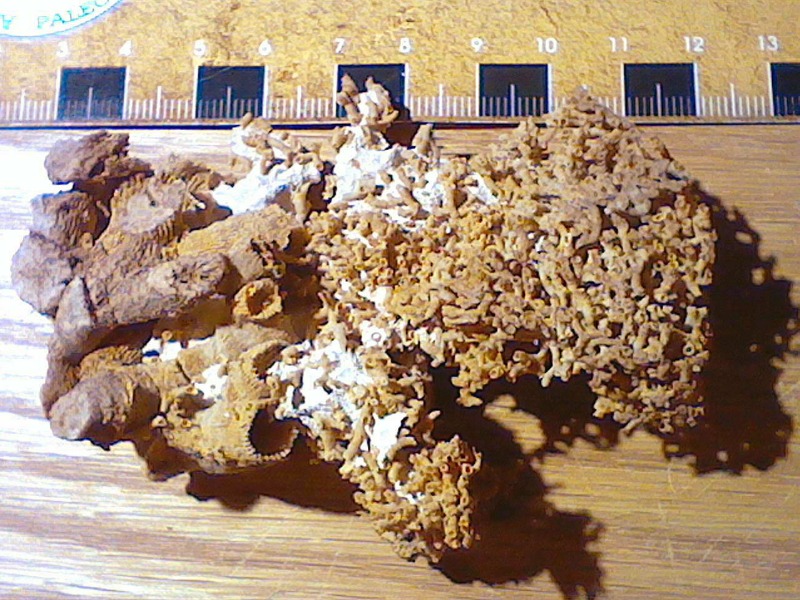
Aulopora - such a beautiful coral, this is a colonial tabulate with no septa visible. 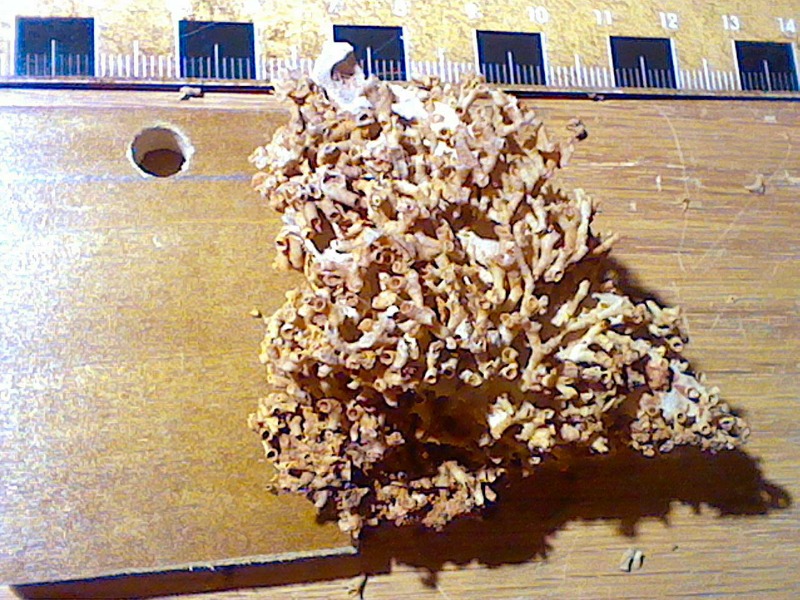
Aulopora - Closer view with the web cam. 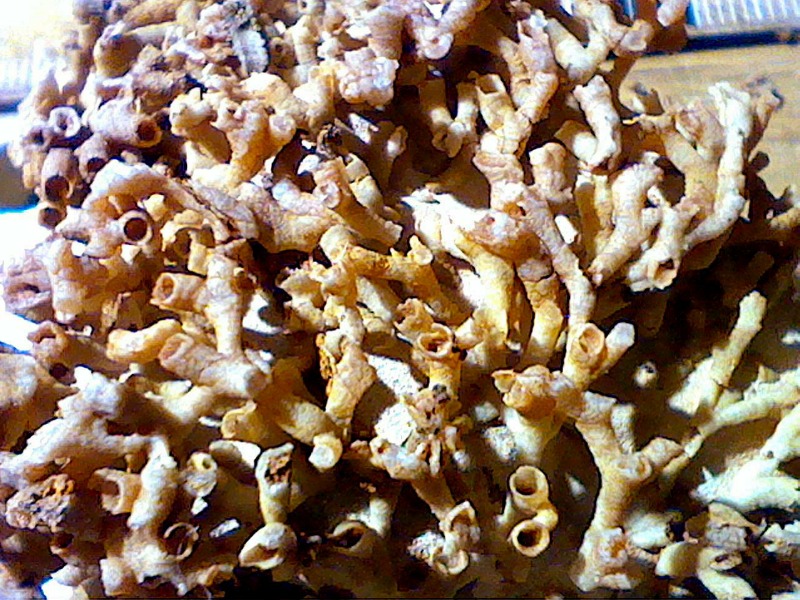
Aulopora 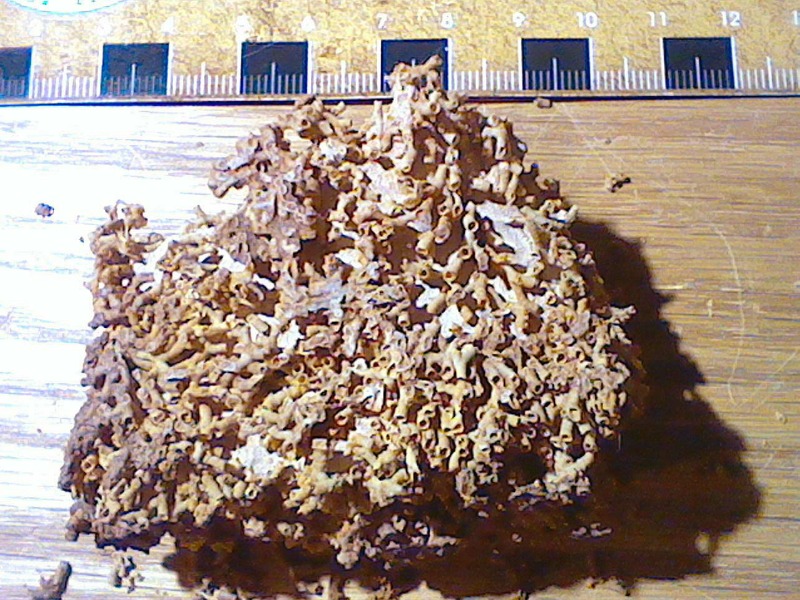
Aulopora 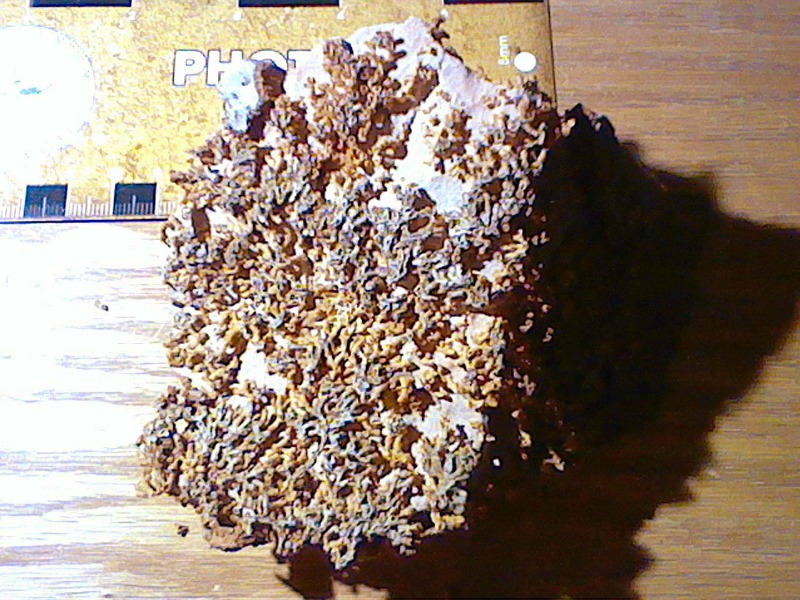
Aulopora 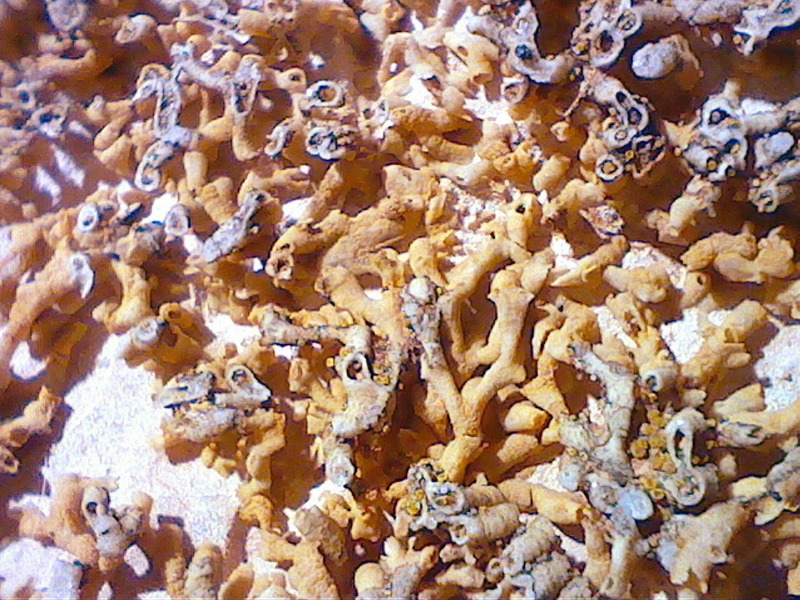
Aulopora 
Side view of Disphyllum colonial rugose shows the branching pipes from a common attachment base. 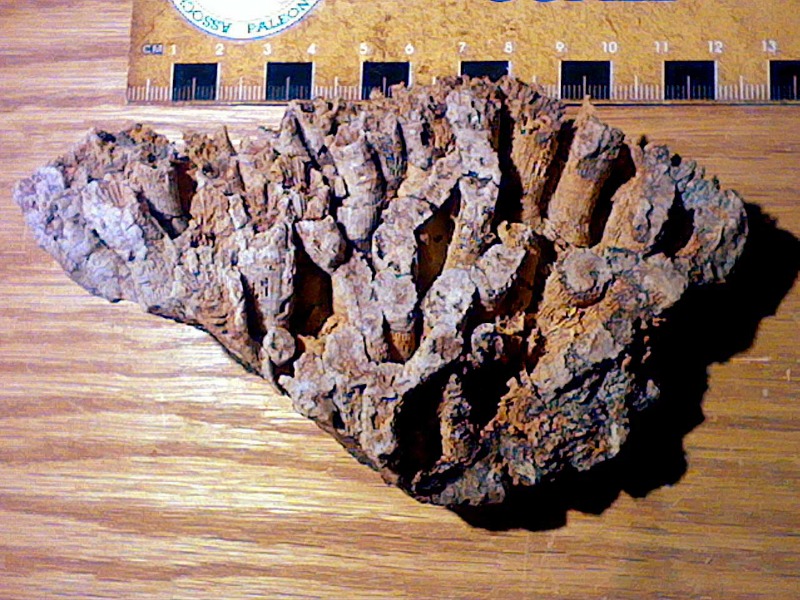
Disphyllum close up showing exterior ribbing. 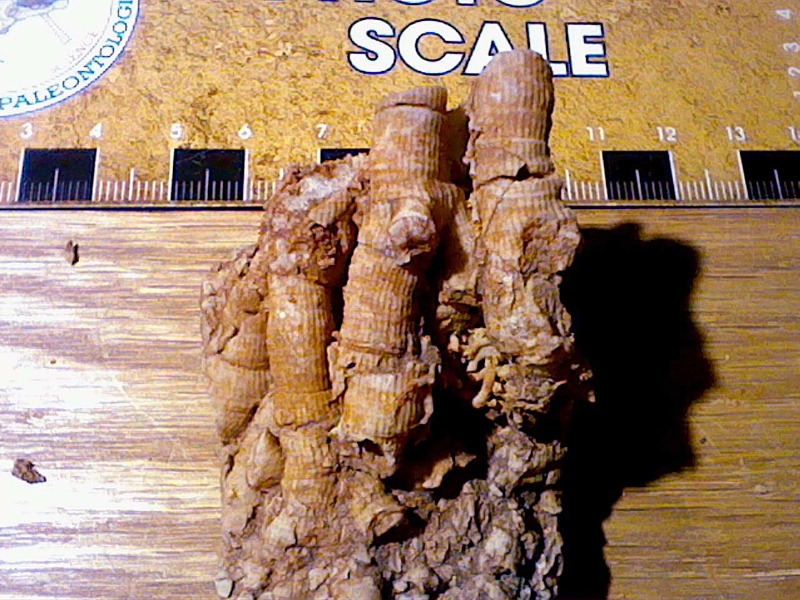
Disphyllum - another branching cluster 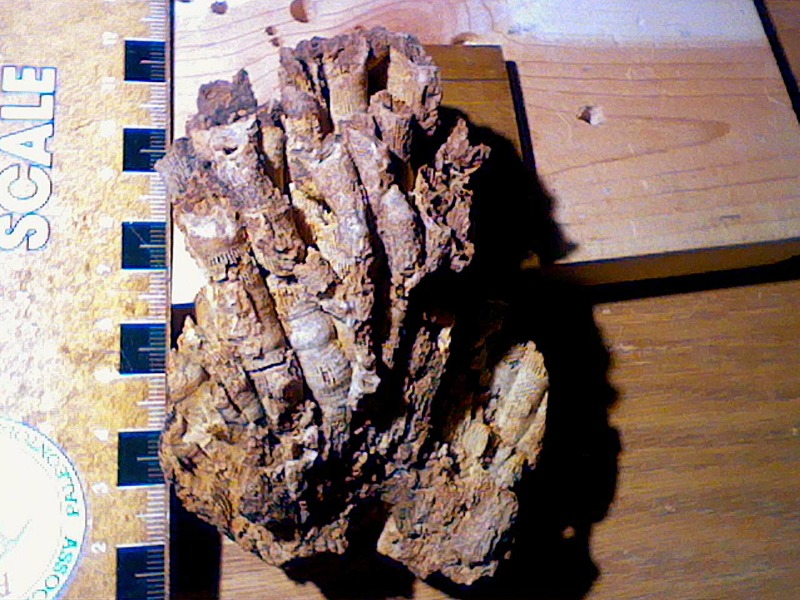
Disphyllum - End view of calice interiors showing septa. 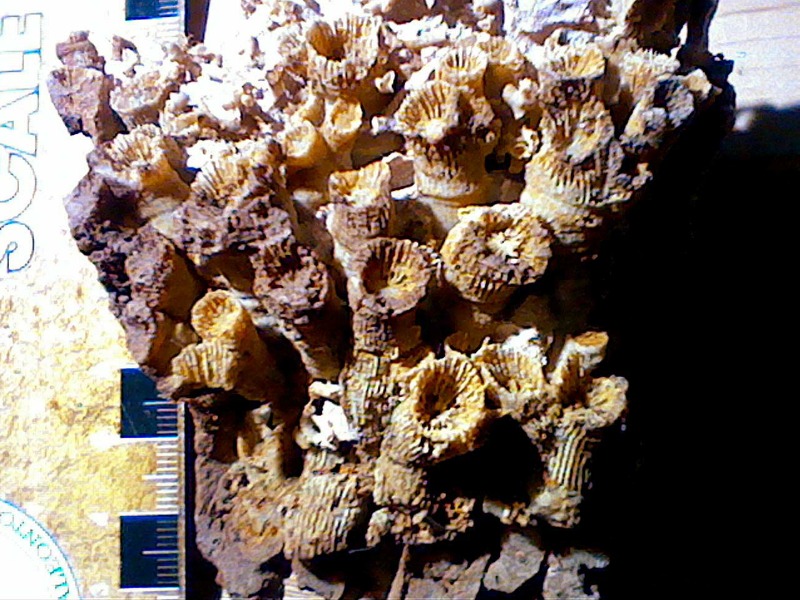
An unknown closely knit tabulate, that has been highly distorted from diagenesis. 
Unknown coral, another specimen from the acid bath. 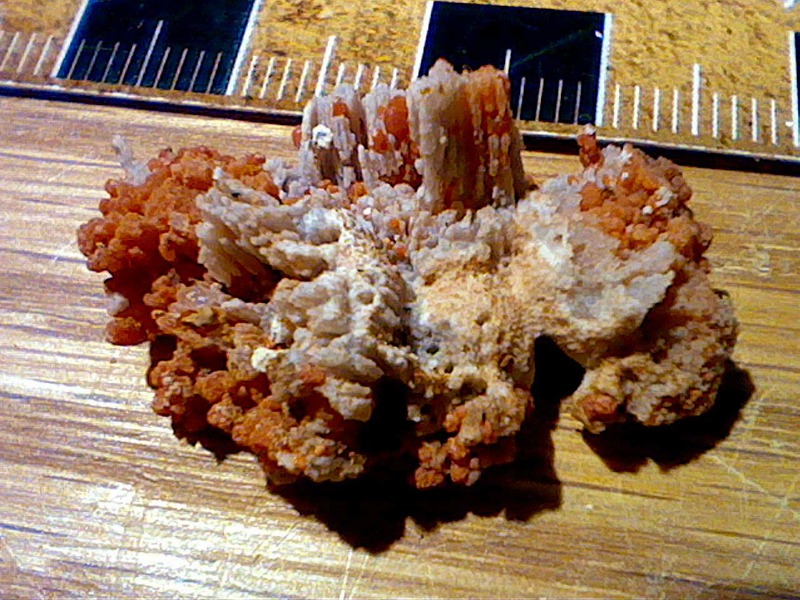
Disphyllum - This is an example of the many hordes of coral bits Dawn was finding in certain areas in the pink platy limestones of the Martin. 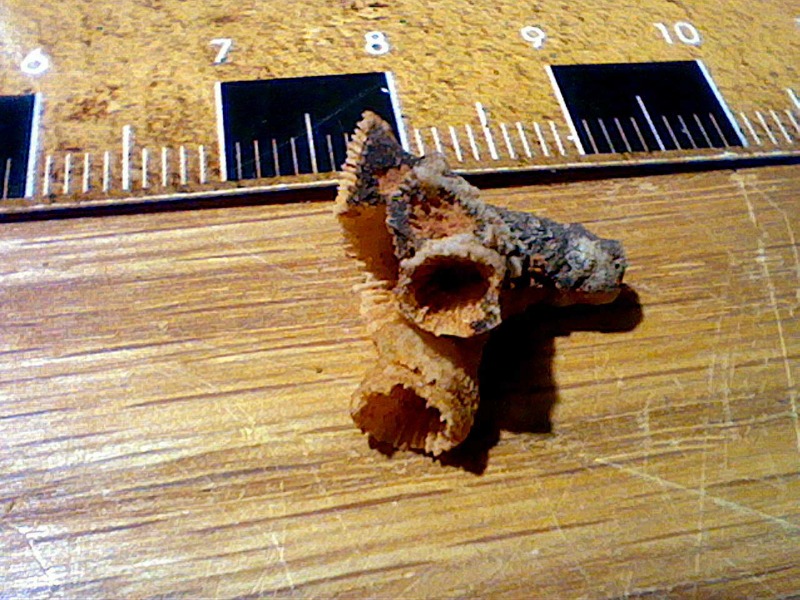
Disphyllum - Close up of one of the disconnected coral bits. 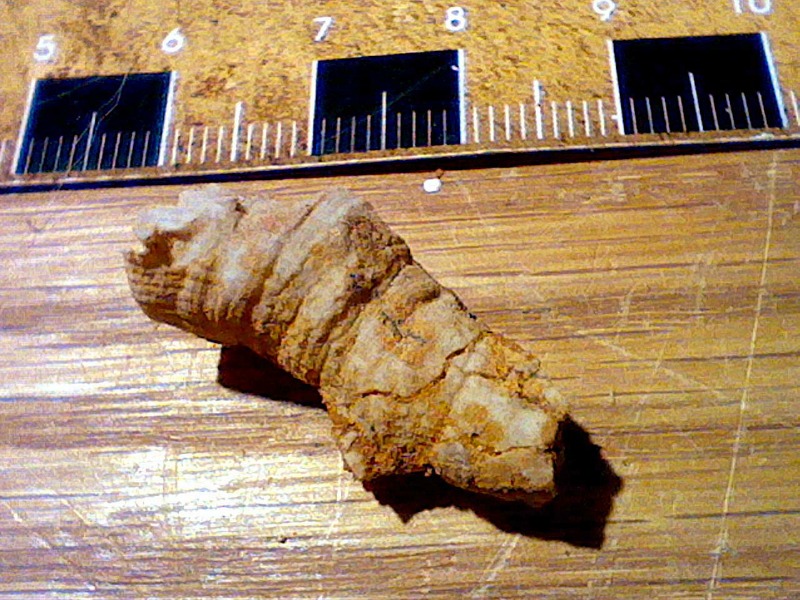
Unknown and poorly preserved colonial rugose from the same area. 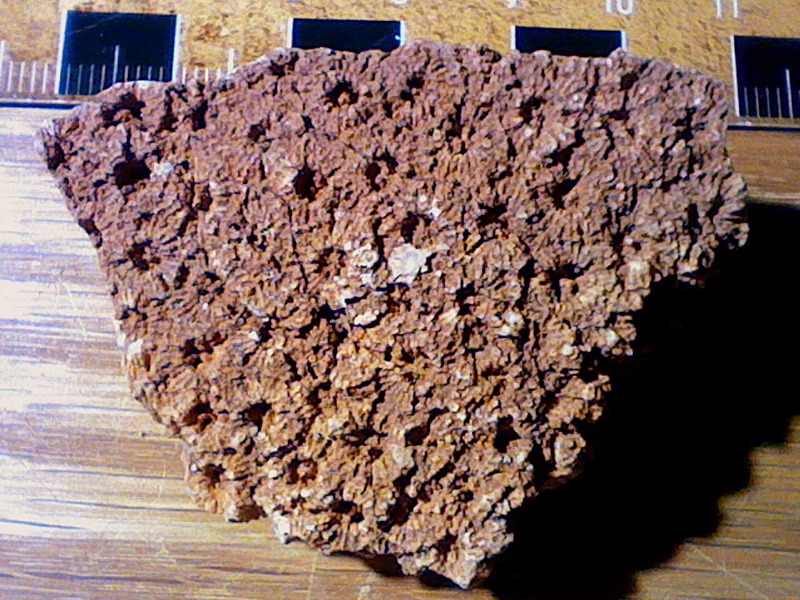
Another specimen of the same type of unknown colonial rugose. 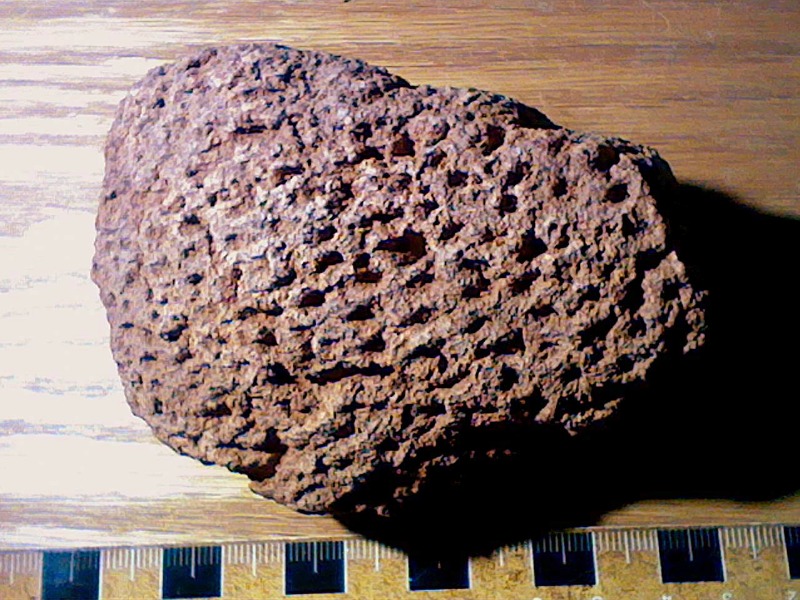
Microscope shots of corals: Here we see the gorgeous Aulopora tabulate with its lovely prostrate branches. Note that the calices are upturned to gather food from the more horizontal tubes.
Aulopora -At higher magnification, the individual calices.
Aulopora - Note the sheared off specimen to the right showing interior of the tubes.
Disphyllum calice close up showing septa clearly. The depth of field here is around 1/4". This type of photo would not be possible without focus stacking software! (Picolay)
Fossils from the Naco near the Power Line road: Here we walked along this road to find large amounts of red cherts, some highly fossiliferous. Up ahead is the Mogollon Rim, the south end of the Colorado Plateau. 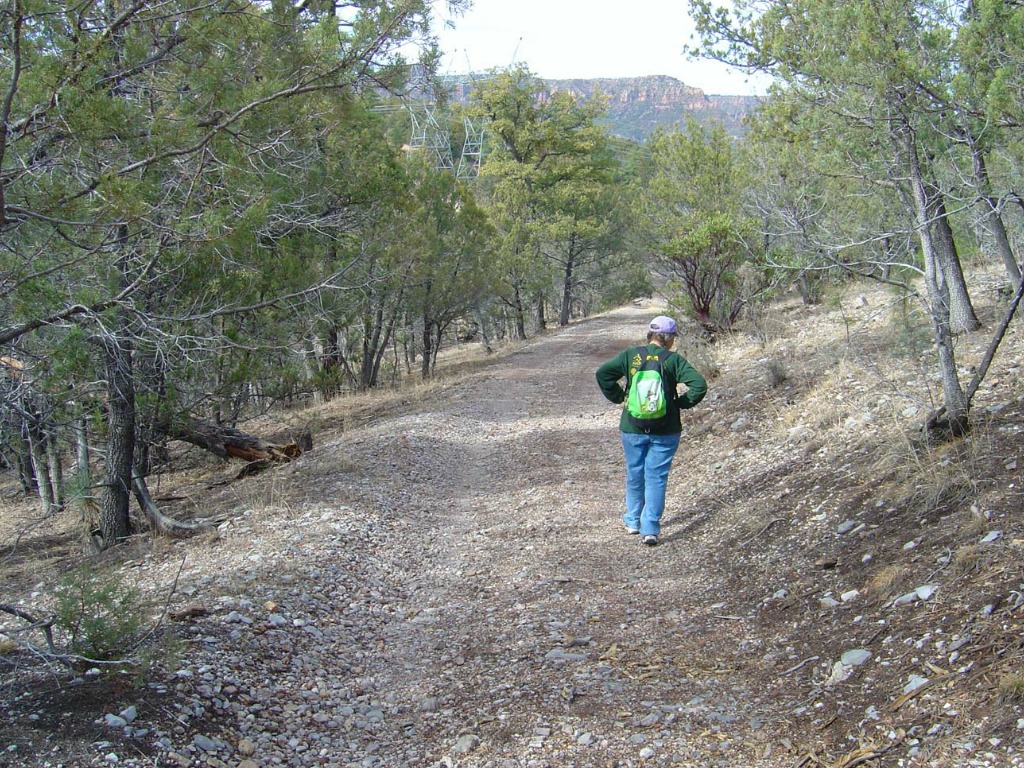
Bone fragment found in Naco. This type of fossil is very rare - Most of the time we find sharks teeth that are very tiny. But here, a big piece of what is most likely a fish bone in a huge boulder. (Yes, its still there). Now some of you may question how we know this is a bone and not just a piece of petrified wood or something. First, of all, this is a deep water marine environment, with a depth around 200 meters. Bone also does not have the exterior detail of wood. Finally, it easily passed the famous "Lick and stick" test. This is where you lick your finger, and touch the fossil. The porous nature of fossil bone causes your finger to stick like touching a piece of scotch tape, and the surrounding rock will just get wet and not stick. Sharks teeth from this formation do the same thing. 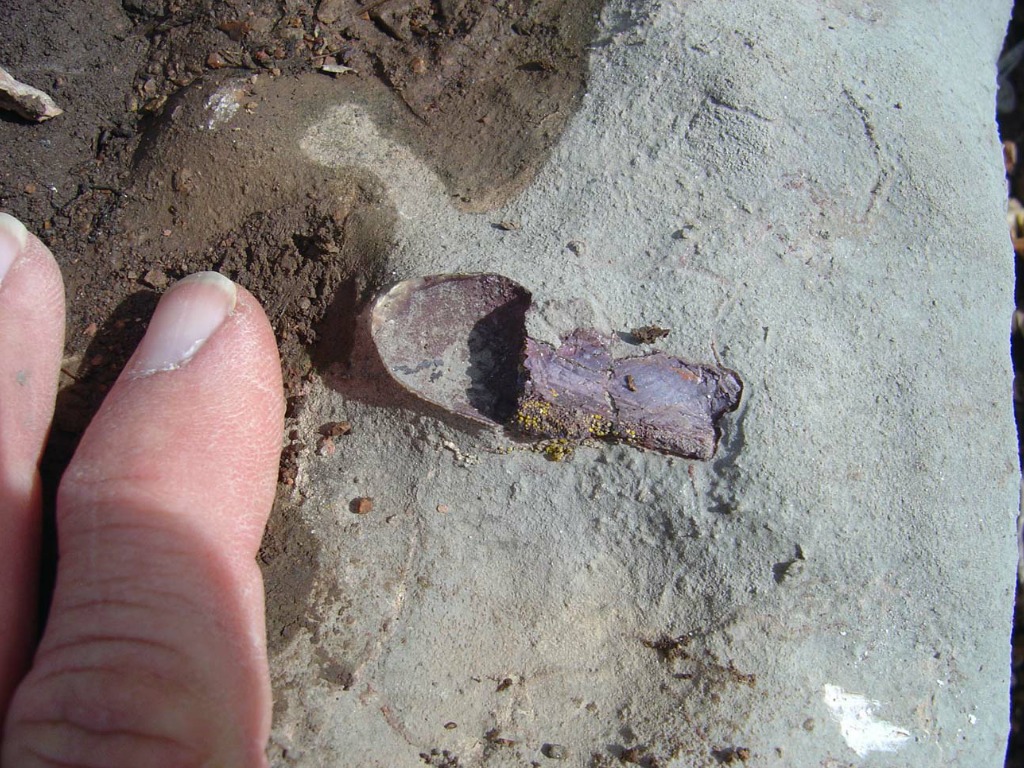
Enlargement showing bone details. 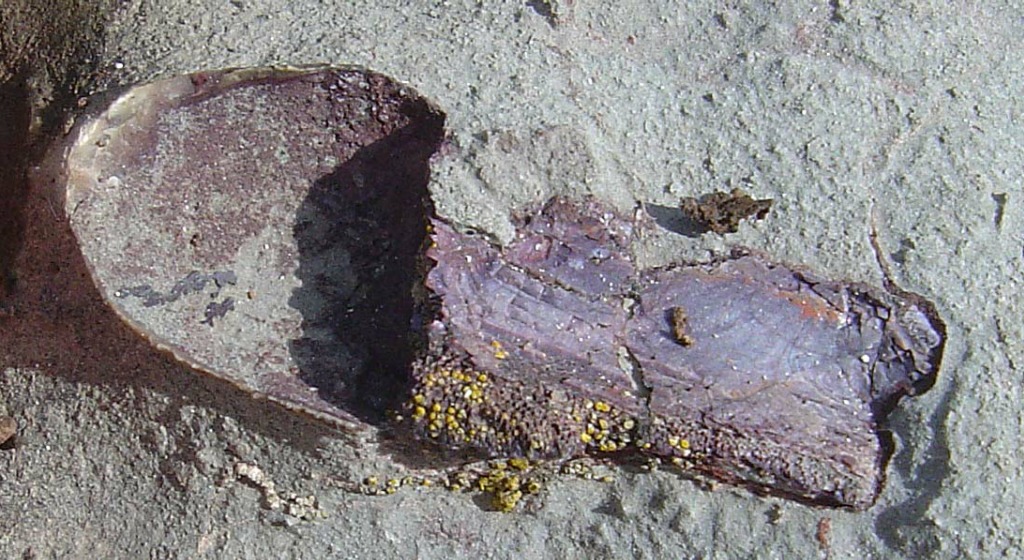
Crinoid ossicles in the red cherts. 
Horn corals preserved as molds and coated with red chert. 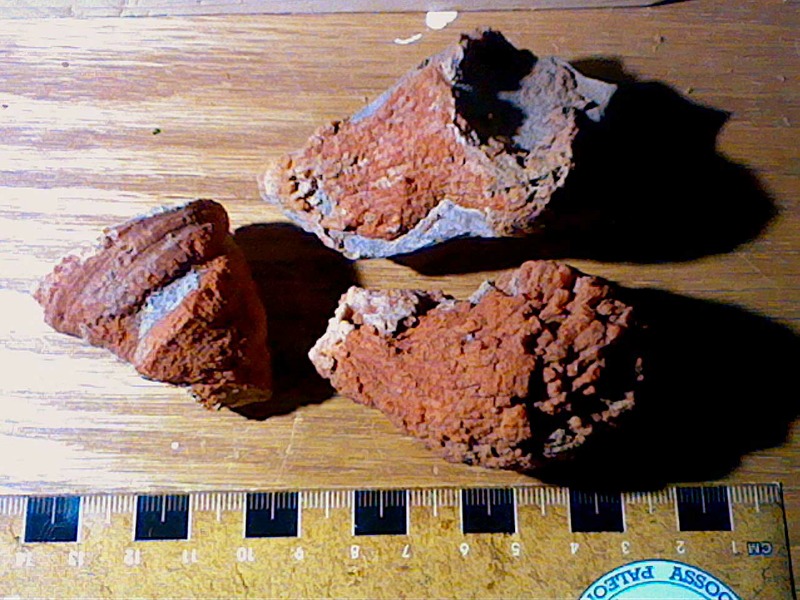
Composita c.f. Composita Subtilita brachiopods in red cherts. These were found loose on the ground. 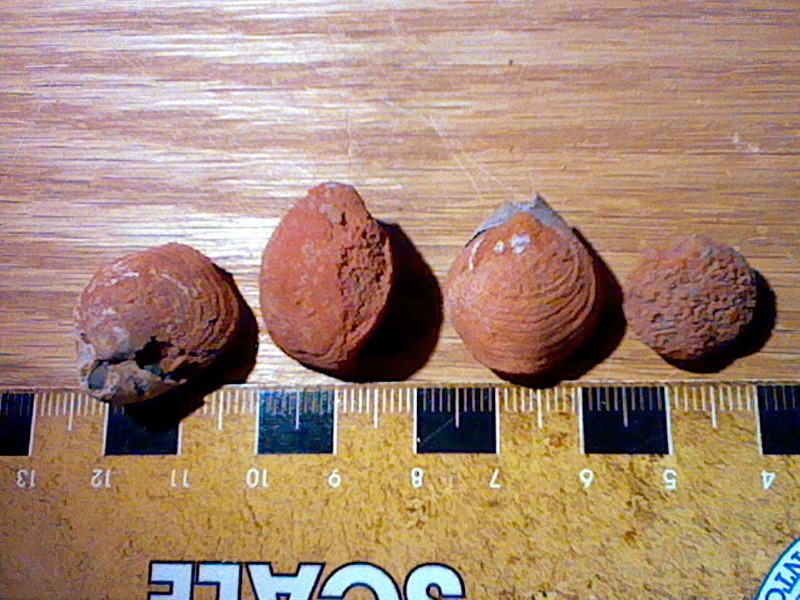
Spirifer brachs too! 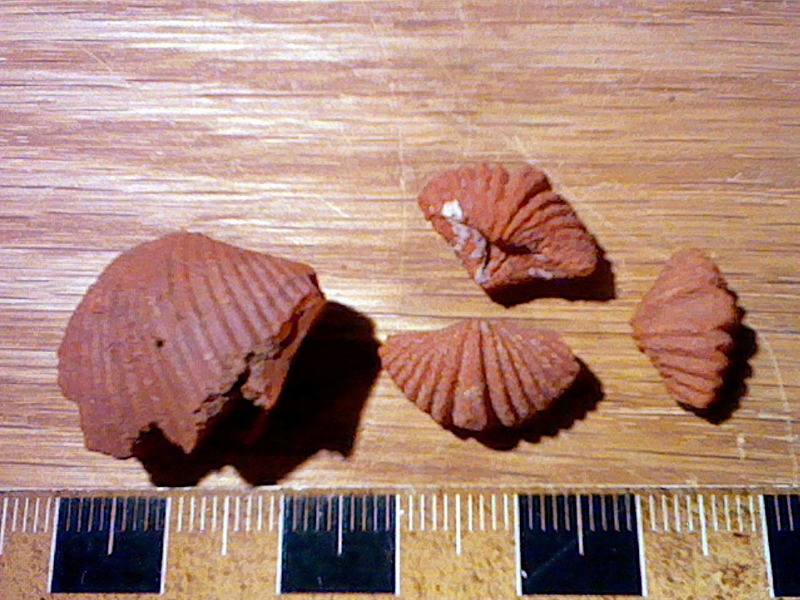
Productid brach, most likely Antiquonia sp. 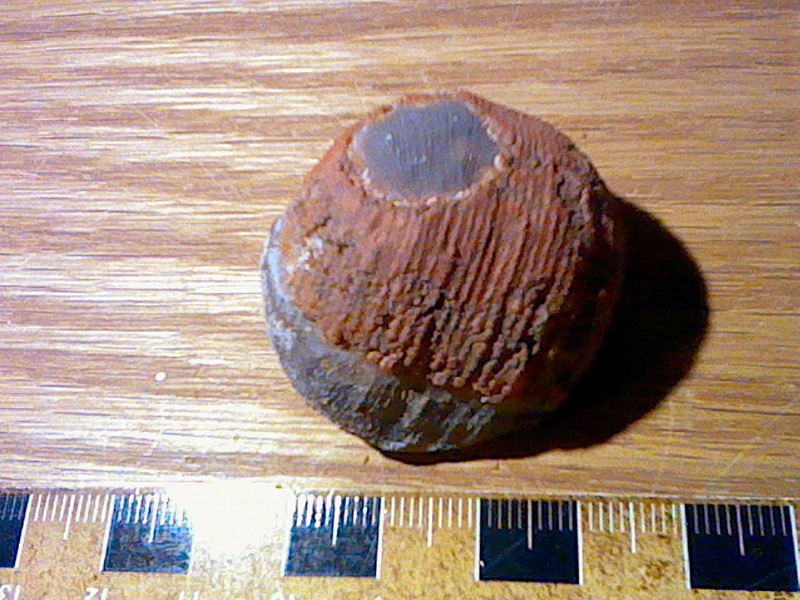
|
